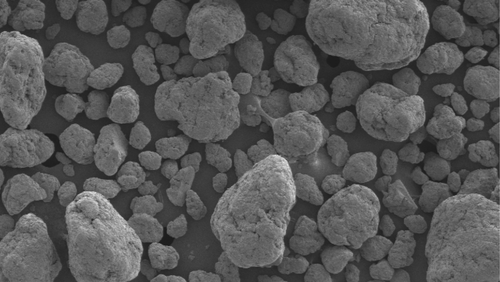当前位置:
X-MOL 学术
›
Chem. Res. Toxicol.
›
论文详情
Our official English website, www.x-mol.net, welcomes your
feedback! (Note: you will need to create a separate account there.)
A Weight-of-the-Evidence Approach for Evaluating, in Lieu of Animal Studies, the Potential of a Novel Polysaccharide Polymer to Produce Lung Overload
Chemical Research in Toxicology ( IF 3.7 ) Pub Date : 2021-04-21 , DOI: 10.1021/acs.chemrestox.0c00301 Gregory S Ladics 1 , Owen Price 2 , Shantanu Kelkar 1 , Scott Herkimer 1 , Shawn Anderson 1
Chemical Research in Toxicology ( IF 3.7 ) Pub Date : 2021-04-21 , DOI: 10.1021/acs.chemrestox.0c00301 Gregory S Ladics 1 , Owen Price 2 , Shantanu Kelkar 1 , Scott Herkimer 1 , Shawn Anderson 1
Affiliation

|
The United States Environmental Protection Agency (EPA) is concerned about the respiratory effects caused by respirable particles of water-insoluble high molecular weight polymers. The EPA has proposed a tiered approach to evaluate polymer lung overload, a kinetic event. Kinetic polymer lung overload in itself is not necessarily adverse, however, inhalation of respirable particulate matter can have adverse effects (i.e., inflammation, fibrosis, etc.). If Tier I testing demonstrates that particles may reach the distal lung (i.e., a non-negligible amount of respirable particles/droplets ≤10 μm in diameter and lack of biosolubility), then animal inhalation testing in Tiers II–IV would be requested. In silico, in chemico, and in vitro alternatives should be considered versus in vivo testing for animal welfare purposes. An in chemico measure of biosolubility was used to demonstrate that a novel α-1,3-glucan polysaccharide, made by enzymatic polymerization of glucose from sucrose, is biosoluble and fits a simple exponential decay model with a half-life on the order of 66 days. The multiple-path particle dosimetry (MPPD) in silico model was used to predict lung burden for the novel α-1,3-glucan polysaccharide. MPPD was validated with measurements in rats exposed to a toner particulate and showed good agreement with lung burden measurements. A simulated 24 month rat exposure yielded 10–20 times less lung burden for the polysaccharide compared to the toner at equivalent exposure concentrations. The MPPD model was refined to include biosolubility data for the polysaccharide polymer. Data for amorphous silica were used to validate the clearance model, and the model incorporating dissolution predicted the amorphous silica lung burden within 20% of measured values. Human equivalent concentrations (HECs) were calculated for each toner rat exposure concentration. HECs were also determined for the polysaccharide at exposure concentrations yielding the same predicted internal doses as the toner. The in vitro, in chemico and in silico studies described here for the novel polysaccharide provide a useful weight of evidence approach in the absence of animal studies for the evaluation of polymer substances where polymer lung overload may be a concern.
中文翻译:

一种替代动物研究的证据权重方法评估新型多糖聚合物产生肺超负荷的潜力
美国环境保护署 (EPA) 关注由水不溶性高分子量聚合物的可吸入颗粒引起的呼吸影响。EPA 提出了一种分层方法来评估聚合物肺超负荷,这是一种动力学事件。动力学聚合物肺超负荷本身并不一定是不利的,但是,吸入可吸入颗粒物会产生不利影响(即炎症、纤维化等)。如果 I 级测试表明颗粒可能到达远端肺(即,不可忽略数量的可吸入颗粒/直径 ≤ 10 微米且缺乏生物溶解性),则将要求进行 II-IV 级动物吸入测试。计算机、化学和体外出于动物福利目的,应考虑替代品与体内试验。一个在CHEMICO生物溶解性的措施是用于证明一种新的α-1,3-葡聚糖的多糖,通过从蔗糖葡萄糖的酶聚合制成,是生物可溶性和适合与半衰期的简单的指数衰减模型66的数量级上天。多路径粒子剂量测定 (MPPD)计算机模型用于预测新型 α-1,3-葡聚糖多糖的肺负荷。MPPD 通过暴露于碳粉颗粒的大鼠的测量得到验证,并显示出与肺负荷测量的良好一致性。与同等暴露浓度的碳粉相比,模拟 24 个月的大鼠暴露使多糖的肺负荷减少 10-20 倍。MPPD 模型经过改进以包括多糖聚合物的生物溶解度数据。无定形二氧化硅的数据用于验证清除模型,并且结合溶出度的模型预测无定形二氧化硅肺负荷在测量值的 20% 以内。计算每个墨粉大鼠暴露浓度的人等效浓度 (HEC)。还测定了暴露浓度下多糖的 HEC,产生与调色剂相同的预测内部剂量。这在没有动物研究的情况下,这里描述的新型多糖的体外、化学和计算机研究提供了一种有用的证据权重方法,用于评估聚合物肺超负荷可能是一个问题的聚合物物质。
更新日期:2021-06-21
中文翻译:

一种替代动物研究的证据权重方法评估新型多糖聚合物产生肺超负荷的潜力
美国环境保护署 (EPA) 关注由水不溶性高分子量聚合物的可吸入颗粒引起的呼吸影响。EPA 提出了一种分层方法来评估聚合物肺超负荷,这是一种动力学事件。动力学聚合物肺超负荷本身并不一定是不利的,但是,吸入可吸入颗粒物会产生不利影响(即炎症、纤维化等)。如果 I 级测试表明颗粒可能到达远端肺(即,不可忽略数量的可吸入颗粒/直径 ≤ 10 微米且缺乏生物溶解性),则将要求进行 II-IV 级动物吸入测试。计算机、化学和体外出于动物福利目的,应考虑替代品与体内试验。一个在CHEMICO生物溶解性的措施是用于证明一种新的α-1,3-葡聚糖的多糖,通过从蔗糖葡萄糖的酶聚合制成,是生物可溶性和适合与半衰期的简单的指数衰减模型66的数量级上天。多路径粒子剂量测定 (MPPD)计算机模型用于预测新型 α-1,3-葡聚糖多糖的肺负荷。MPPD 通过暴露于碳粉颗粒的大鼠的测量得到验证,并显示出与肺负荷测量的良好一致性。与同等暴露浓度的碳粉相比,模拟 24 个月的大鼠暴露使多糖的肺负荷减少 10-20 倍。MPPD 模型经过改进以包括多糖聚合物的生物溶解度数据。无定形二氧化硅的数据用于验证清除模型,并且结合溶出度的模型预测无定形二氧化硅肺负荷在测量值的 20% 以内。计算每个墨粉大鼠暴露浓度的人等效浓度 (HEC)。还测定了暴露浓度下多糖的 HEC,产生与调色剂相同的预测内部剂量。这在没有动物研究的情况下,这里描述的新型多糖的体外、化学和计算机研究提供了一种有用的证据权重方法,用于评估聚合物肺超负荷可能是一个问题的聚合物物质。











































 京公网安备 11010802027423号
京公网安备 11010802027423号